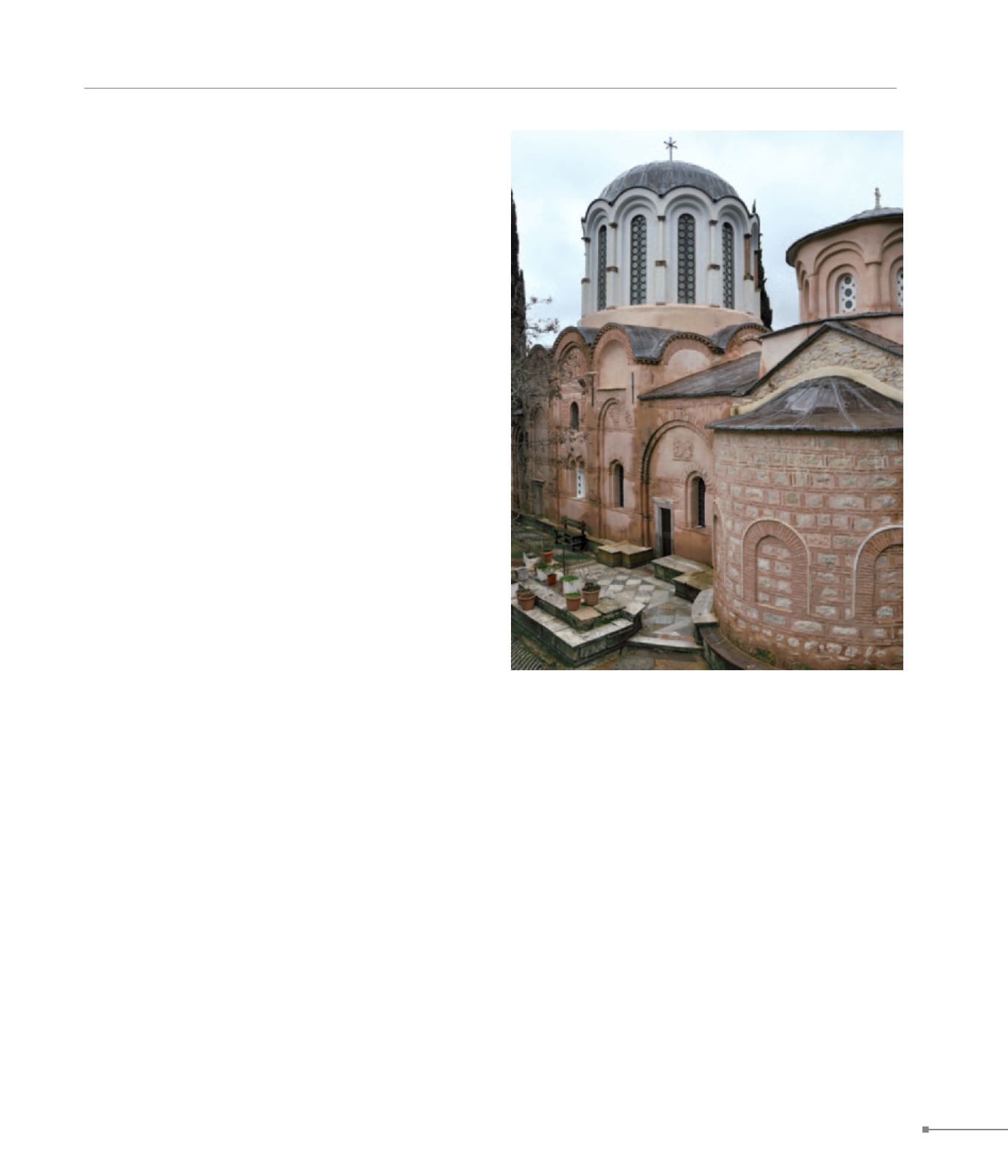
573. Chios
573. Chios
THE ISLANDS
327
573. Chios, Nea Moni, catholicon (Χίος, Νέα Μονή, καθολικό)
second, smaller, rock-cut church dedicated to Saint Anne. It
is of the same architectural type as the Panagia church and
displays the earliest frescoes on the island, dating from the
10th-11th c. On the apse, the scene of Platytera belongs to a
layer from the 13th-14th c. Further above the Panagia church
is the barrel-vaulted, single-nave naiskos of Aghios Thalalaios
with Byzantine wall-paintings and the earliest carved wood al-
tar screen on the island (dated to 1711).
Perparea. (7)
Perparea was mentioned by a castellan from 1379, and from
1420 it was described as the fortress of Apano Meria. Today
nothing seems to have been preserved at the site of Perpa-
rea from the medieval period. There are remains of an ancient
cemetery in use until the Early Christian era.
Pispilounta. (8)
South of the village of Pispilounta is a ruined fortified complex
dating from the early period of the Genoese occupation. The
complex is called Pyrgos Ta Markou or T’ Amarkou. An enclo-
sure surrounds structural remains: a two-storey rectangular
tower, a cistern, the chapel of Aghia Paraskevi, as well as the
ruined Panagia church.
Volissos. (9)
The establishment of the castle, and its name, have been as-
sociated with Belisarius, Emperor Justinian’s general, who
was exiled at Volissos, according to tradition. Volissos was
mentioned later as a place of exile for Byzantine emperors
and officials, such as Bardas Phokas (in 921 or 968) and Em-
peror Michael V Kalaphates (r. 1041-1042). As Anna Comnena
writes in the Alexiad, during the time of Emperor John II Com-
nenus (r. 1118-1143), Constantine Dalassenos, admiral of the
Byzantine fleet, led operations in the area and occupied Volis-
sos after defeating the pirate Tzachas (1089), who ravaged the
coast of Asia Minor and the islands. During the period of Ge-
noese occupation, Volissos was the main town of N Chios and
a religious see, as well as the centre of the Genoese defence
system. The castle of Volissos stretched along the hill above
the medieval settlement. The defensive walls have a six-sided
shape with six circular towers and a quadrilateral bastion. The
castle is in a relatively good condition and seems to have pre-
served its Byzantine plan without particular alterations.
Sidirounta. (10)
The church of Saint George Prasteias is a single-nave building
to which a narthex was added; its openings underwent various
alterations. Above the original entrance is a five-line inscrip-
tion mentioning the fundamental renovation by the Genoese
Battista Giustiniani da Campi and his wife Bigota in 1415. The
interior of the church is covered with frescoes.
Anavatos. (11)
Anavatos is found at the top of a steep hill with access from
the N side. Judging by its location, it must originally have been
built for defensive reasons due to its immediate visual contact
with the network of watchtowers located along the W coast of
the island. Research has not reached any conclusions about
whether it was a village contemporary with the medieval vil-
lages of S Chios, but it is probably earlier. At the summit of the
hill stands the citadel with the Taxiarchs church and the three-
storey, twin-nave Panagia. The houses of the village are usu-
ally two-storeyed, of restricted dimensions, with narrow fronts
and small openings. The peak years of the settlement were
during Turkish rule. The earthquake of 1881 was the reason
Anavatos became deserted.


